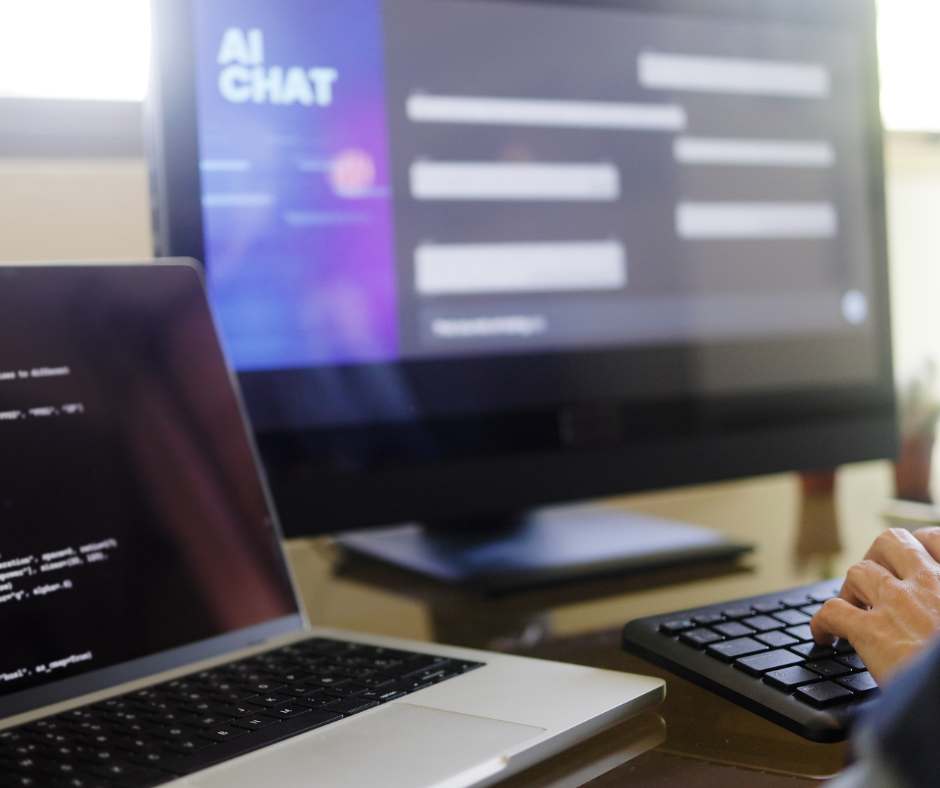Exploring Dash Cams, AI Accident Reconstruction, and Digital Records in Personal Injury Trials
The Evolution of Evidence in a Digital Age
In the history of personal injury law, the cornerstone of a case has traditionally been a human element. A claim’s success or failure often hinged on the credibility of eyewitnesses, the accuracy of a police officer’s report, and the compelling testimony of a medical doctor. These human-centric forms of evidence have long been the pillars of establishing fault, causation, and damages.
However, we are at a pivotal moment where technology, and specifically the integration of Artificial Intelligence (AI), is fundamentally transforming the landscape of personal injury litigation. The quiet, but significant, shift is from a reliance on human perception and memory to an increasing dependence on objective, data-driven evidence. The devices we use every day—from our smartphones and smartwatches to the cameras in our vehicles and on street corners—are now acting as silent, unbiased witnesses. At the forefront of this evolution are dash cams, sophisticated AI-driven accident reconstruction models, and an ever-expanding universe of digital records.
This article explores how these cutting-edge technologies are influencing the pursuit of justice in personal injury trials, particularly in a high-traffic, technologically-forward state like Florida. For victims of accidents, understanding the power and limitations of this new digital evidence is no longer a luxury—it’s a necessity.
The Rise of Digital Evidence: Beyond Human Recollection
The human memory is fallible. Eyewitnesses are often distracted, their recollections can be influenced by bias, and their testimonies can conflict with one another. This is where digital evidence, particularly video footage, has become a game-changer. The proliferation of cameras in our society provides a layer of objectivity that was previously unimaginable.
- Dash Cams: Once a niche accessory for enthusiasts and commercial drivers, dash cams are now commonplace on Florida roads. These small cameras mounted on a vehicle’s dashboard can provide an irrefutable, moment-by-moment account of an accident. Unlike an eyewitness whose perspective may be limited, a dash cam captures the speed of vehicles, the timing of traffic signals, and the sequence of events leading up to an impact. This video footage can be the definitive piece of evidence that proves a driver ran a red light, made an illegal lane change, or was driving erratically. In a “he said, she said” scenario, dash cam video can instantly determine fault, often leading to faster and fairer resolutions without the need for a protracted trial. It can also be crucial in hit-and-run cases, capturing the fleeing vehicle’s license plate and a clear image of the driver.
- Body Cams and Security Footage: Beyond dash cams, video evidence is everywhere. Law enforcement officers often wear body cameras that may capture the immediate aftermath of an accident, including a defendant’s statements or the scene’s condition before it is altered. Businesses and homes have security cameras that may have recorded the accident from a different angle, capturing details that a dash cam missed. In a premises liability case, surveillance footage from a store can show a customer slipping on a liquid and, more importantly, can show how long the liquid was on the floor, proving “constructive notice” on the part of the property owner.
The challenges with this type of evidence, however, are not insignificant. They involve legal hurdles around the chain of custody, authentication (ensuring the video has not been tampered with), and privacy concerns. A skilled attorney must act quickly to preserve this evidence before it is recorded over, and they must know how to properly introduce it in a courtroom.
AI Accident Reconstruction: From Human Experts to Precise Algorithms
For decades, accident reconstruction has been a specialized field dominated by human experts. These professionals use physics, engineering principles, and physical evidence (like skid marks, vehicle damage, and impact locations) to meticulously piece together the events of a crash. This process is time-consuming and often subject to human interpretation.
Today, AI is entering this field, not as a replacement for human experts, but as a powerful new tool. AI accident reconstruction involves using sophisticated algorithms to analyze vast amounts of data to create incredibly precise and verifiable simulations of a crash.
- Data Sources for AI Reconstruction: The data used in these models is far more extensive than what was available to traditional experts. It can include:
- Event Data Recorders (EDRs): Known as “black boxes,” these devices are now standard in most vehicles. They record data in the moments before, during, and after an accident, including vehicle speed, brake application, steering angle, and seatbelt usage.
- Vehicle Telemetry Data: Modern cars with GPS and connected services constantly generate data on speed, location, and acceleration. This telemetry can provide a minute-by-minute account of a vehicle’s path.
- High-Resolution Crash Test Data: AI models are trained on thousands of official crash test scenarios, allowing them to predict vehicle deformation, occupant kinematics, and energy transfer with high accuracy.
- Photogrammetry and Lidar Data: Lawyers can use drones or specialized scanners to create precise 3D models of an accident scene, including every piece of debris. AI can then analyze this data to recreate the events with pinpoint accuracy.
- The Process: An AI-driven system can take all of this raw, objective data and run thousands of simulations to determine the most probable sequence of events. It can calculate the exact speed of a vehicle at the point of impact, identify the precise angle of a collision, and model the force exerted on a vehicle’s occupants. This level of detail can be invaluable for establishing liability and for proving the cause of a victim’s specific injuries.
- Legal Admissibility: The primary legal challenge for AI reconstruction is its admissibility in court. Florida’s courts follow the Daubert standard, which requires expert testimony to be based on scientifically valid and reliable methodology. This means a skilled attorney and a qualified expert must be prepared to explain to a judge and jury exactly how the AI model works, the data it was trained on, and the scientific principles that validate its conclusions. This addresses the so-called “black box” problem, ensuring the AI’s findings are transparent and not just a mysterious output from an algorithm.
The Role of Digital Records and Wearable Technology
The digital footprint we all leave behind is another powerful source of evidence that is transforming personal injury litigation. This data can provide a detailed, unbiased narrative of a victim’s life both before and after an accident, painting a clear picture of the impact of their injuries.
- Electronic Health Records (EHR): Most doctors’ offices, hospitals, and physical therapy clinics now use electronic health records. Unlike handwritten notes that were sometimes illegible or incomplete, EHRs provide a detailed, timestamped record of a victim’s entire course of treatment. This includes everything from the initial emergency room visit to follow-up appointments, medication prescriptions, and physical therapy sessions. This evidence can be used to prove the severity of injuries, the consistency of a patient’s symptoms, and the need for ongoing medical care, directly supporting a claim for damages.
- Wearable Technology and Fitness Trackers: The data from a person’s smartwatch (like an Apple Watch), a fitness tracker (like a Fitbit), or a smartphone’s health app is a new frontier for evidence. An attorney can subpoena this data to show a victim’s pre-accident activity level—for instance, they consistently walked 10,000 steps a day, went for regular runs, or used a standing desk. The same data from after the accident can then show a dramatic drop-off in activity, a sudden increase in sedentary time, or a consistently elevated heart rate, visually demonstrating the physical and emotional impact of their injuries. This can be powerful for showing a jury the “loss of enjoyment of life” that a victim has suffered.
- Geolocation Data: The GPS data from a person’s smartphone or a vehicle’s infotainment system can be used to verify a victim’s location and movements before, during, and after an accident. This data can corroborate their version of events, disprove a defendant’s conflicting claims about where the accident occurred, and even show if a driver was speeding.
Obtaining this data is a complex legal process. It often requires a subpoena or court order, as well as a thorough understanding of privacy laws and the legal arguments for why this data is relevant to a case.
Legal Ramifications for Florida Courtrooms
The integration of AI and digital evidence is not just a technological shift; it’s a legal one. Law firms and courts in Florida are grappling with how to properly handle this new form of evidence. The state’s evidence code, like that of many jurisdictions, was written in an era before this technology existed.
- Navigating the Daubert Standard: For any expert testimony to be admissible in a Florida courtroom, it must meet the Daubert standard. This means the testimony must be based on a reliable and scientifically valid methodology. For AI-driven evidence, such as an accident reconstruction model, a lawyer must be prepared to prove that the AI’s methodology is sound, has been tested, has a known error rate, and is generally accepted by the scientific community. A skilled attorney will work with a qualified expert who can testify to the validity of the technology, ensuring the evidence can be used.
- Impact on Legal Strategy: The availability of this data has changed the way personal injury cases are prepared and litigated.
- Proactive Data Preservation: Attorneys must act quickly to send “spoliation letters” to all relevant parties (e.g., businesses with security cameras, vehicle manufacturers) to demand that they preserve any data related to the accident.
- Expertise is Key: A law firm must have a team that is not only skilled in litigation but is also tech-savvy. They need to know what data to look for, how to legally obtain it, and what experts to hire to interpret it and present it to a jury in a way that is understandable and compelling.
- A Double-Edged Sword: This technology is a double-edged sword. While it can provide irrefutable proof of a defendant’s negligence, it can also reveal details about a plaintiff’s own conduct. For example, vehicle telemetry could show that a plaintiff was speeding, or phone records could show that they were texting at the time of the accident. A thorough attorney will investigate all potential data sources to fully understand the strengths and weaknesses of a case before it goes to trial.

Technology as an Ally, Not a Replacement
The landscape of personal injury litigation is undeniably changing. The days of relying solely on eyewitness accounts and handwritten notes are fading, replaced by a world where data, algorithms, and digital records provide a new layer of objective truth. The evidence is not just what a person remembers—it’s what a computer recorded.
For victims of accidents in Florida, this technological shift is a powerful opportunity. With the right legal team, AI and digital evidence can be an invaluable ally in proving fault, establishing the full extent of your injuries, and securing the compensation you deserve. It can help bridge the gap between human perception and objective reality, providing a clearer, more precise narrative of what truly happened.
However, technology is not a replacement for skilled legal representation. It is a tool. The real power comes from a law firm that understands this evolving landscape, knows how to leverage this new evidence strategically, and is prepared to fight for its admissibility in the courtroom. With the right legal expertise, this digital revolution in evidence can help ensure that justice is served.






